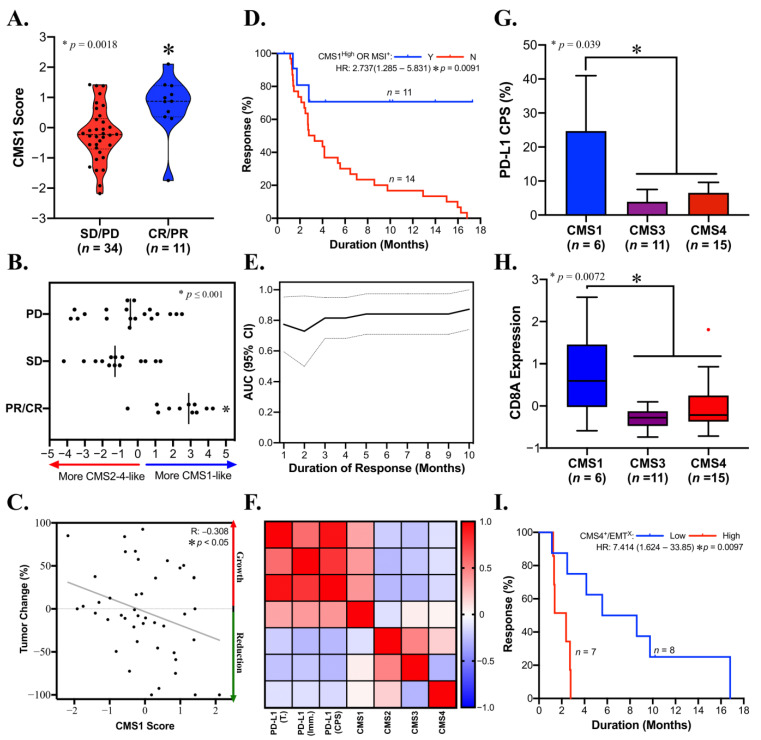Figure 5.
CMS1 predicts the response to subsequent lines of anti-PD1 (pembrolizumab) in advanced GAC. (A) CMS1 score is significantly increased in pembrolizumab responders in GAC (p = 0.0018). (B) CMS1High/CMS2-4Low patients have improved responses to pembrolizumab (p ≤ 0.001). (C) CMS1 score is linearly correlated with a reduction in tumor burden (p < 0.05, R = −0.308). (D) CMS1 combined with standard dMMR-based MSI status (n = 9 and n = 3 respectively) predicts sustained durability of pembrolizumab therapy. (E) ROC analysis from 1–14 months post treatment shows that the CMS1 score is sensitive and specific for prediction of pembrolizumab response at 9, 10, and 13 months post treatment (AUC: 0.7179–0.7833, p < 0.05). (F) Correlation matrix demonstrating that the CMS1 score is positively correlated with PD-L1 immunohistochemistry scoring, whereas CMS2-4 scores are not. (G). PD-L1 CPS is significantly upregulated in CMS4 classified as advanced GACs compared to CMS3/4 (p = 0.0309). (H) The cytotoxic T-cell marker CD8A is significantly upregulated in CMS1 classified as advanced GACs compared to CMS3/4 (p = 0.0072). (I). CMS4/EMTLow tumors demonstrated a significantly longer duration of response to pembrolizumab compared to CMS4/EMTHigh tumors (median PFS: 7.079 and 2.378 months, respectively; p = 0.0097).

